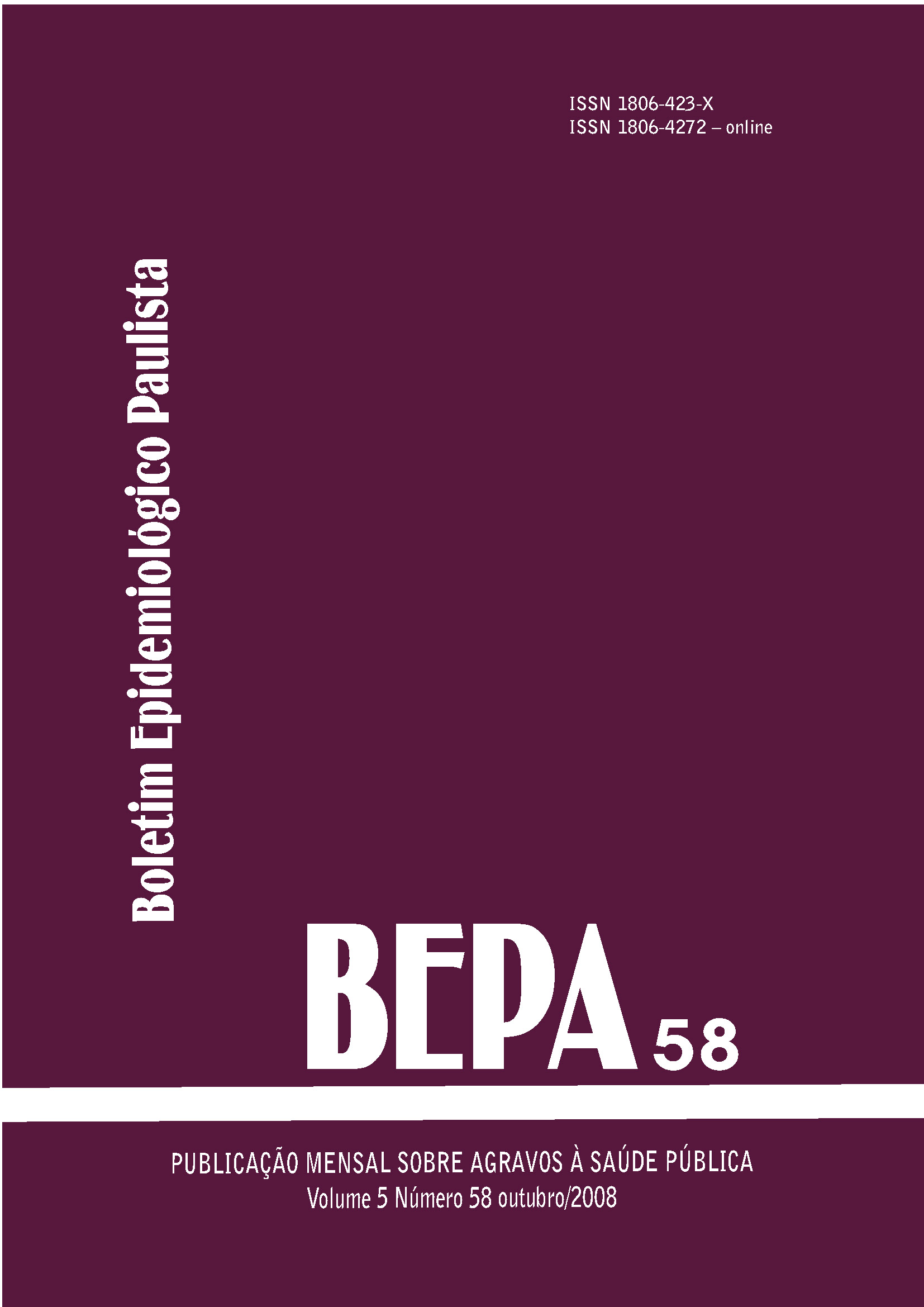Abstract
The occurrence of Staphylococcus as etiologic agent of canine otitis was studied in the city of Aracaju,
Sergipe. Fifty-five swab samples where obtained from private veterinary clinics and analyzed for the
presence of Staphylococcus sp. The traditional method was used and Staphylococcus was isolated
from 18 (32,7%) of the 55 samples collected. The species isolated were S. intermedius, S. aureus and
S. schleiferi. Antimicrobial susceptibility was also tested using the agar diffusion method. This
opportunistic pathogen was more susceptible to cephalexin, imipenem, amoxycillin – clavulanic acid,
teicoplanin and vancomycin, and more resistant to clindamycin, azithromycin, neomycin and
trimethoprim-sulpha. At least, 83% of the isolates were resistant to one antimicrobial compound. The
isolation of oxacillin – resistant Staphylococcus (17% of the isolates) is a fact that worries public health
authorities, showing that pet animals can be a potential source for humans of antimicrobial-resistant
pathogens.
References
Guardabassi L, Schwarz S, Lloyd HD. Pet animals as reservoirs of antimicrobial-resistant
bacteria. J Antimicrob Chemother. 2004;54:321-32.
Lanz R, Kuhnert P, Boerlin P. Antimicrobial resistance and resistance gene determinants in
clinical Escherichia coli from different animal species in Switzerland. Vet Res. 2003;32:341-62.
Sorum H, Sunde M. Resistance to antibiotics in the normal flora of animals. Vet Res. 2001;
:227-41.
Boerlin P, Burnens AP, Frey J. Molecular epidemiology and genetic linkage of macrolide and
aminoglycoside resistance in Staphylococcus intermedius of canine origin. Veterinary
Microbiology. 2001;79:155-69.
Biberstein EL, Hirsh DC. Estafilococos. In: Hirsh, DC & Zee, YC, editores. Microbiologia
veterinária. Rio de Janeiro: Guanabara Koogan; 2003.
Jones RD, Kania SA, Rohrbach BW, Frank L, Bemis DA. Prevalence of oxacillinand multidrugresistant
staphylococcus in clinical samples from dogs: 1,772 samples (2001-2005). JAVMA.
;230(2):221-7.
Guardabassi L, Loeber ME, Jacobson A. Transmission of multiple antimicrobial resistant
Staphylococcus intermedius between dogs affected by deep pyoderma and their owners.
Veterinary Microbiology. 2004;98(1):23-7.
Colombini S, Merchant SR, Hosgood G. Microbial flora and antimicrobial susceptibility patterns
from dogs with otitis. Veterinary Dermatology. 2000;11:235-9.
Cole LK, Kwochka KW, Kowalski JJ, Hillier A. Microbial flora and antimicrobial susceptibility
patterns of isolated pathogens from the horizontal ear canal and middle ear in dogs with otitis
media. JAVMA. 1998;4:534:8.
Lilenbaum W, Veras M, Blum E, Souza GN. Antimicrobial susceptibility of Staphylococci
isolated from otitis externa in dogs. Letters of Applied Microbiology. 2000;31:42-5.
von Eiff C, Arciola CR, Montanaro L, Becker K, Campoccia D. Emerging Staphylococcus
species as new pathogens in implant infections. Int J Artif Organs. 2006;29(4):360-7.
Oliveira LC, Medeiros CMO, Monteiro AJ, Leite CAL, Carvalho CBM. Susceptibilidade a
antimicrobianos de bactérias isoladas de otite externa em cães. Arq Bras Med Vet Zootec.
;57:405-8.
Junco MTT, Barrasa JTM. Identification and antimicrobial susceptibility of coagulase – positive
Staphylococci isolated from healthy dogs and dogs suffering from otitis externa. J Vet Med B
Infect Dis Vet Public Health. 2002;49(9):419-23.
Ganiere JP, Medaille C, Mangion C. Antimicrobial drug susceptibility of Staphylococcus
intermedius clinical isolates from canine pyoderma. J Vet Med B Infect Dis Vet Public Health.
;52(1):25-31.
Tanner MA, Everett CL, Youvan DC. Molecular phylogenetic evidence for noninvasive zoonotic
transmission of Staphylococcus intermedius from a canine pet to a human. J Clin Microbiol.
;38:1628-31.

This work is licensed under a Creative Commons Attribution 4.0 International License.
Copyright (c) 2008 Gabriel Isaias Lee Tunon, Elisângela Pereira Silva, Cristiane Chagas Faierstein
